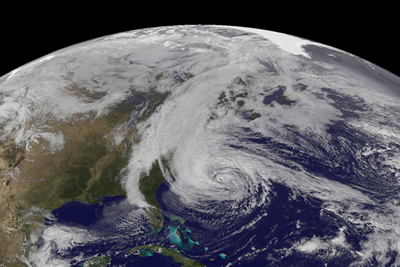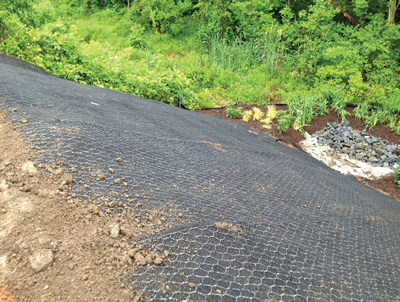
The October 2012 emergence of Super Storm Sandy proved to be one of the most intense and destructive storms on record in the Atlantic Ocean. From the Caribbean up through the Northeastern United States and inward through Quebec and Ontario in Canada, the storm was responsible for nearly 300 deaths and more than USD $65 billion in damage.
Geosynthetics have been a strong part of the rebuild effort, from large-scale waterfront and roadway recoveries to small-scale residential and recreation-related stabilization projects.
Maccaferri has documented a number of these post-Sandy projects, including the following note on how turf reinforcement matting has been used to return a municipal bike path to use for the residents of Blackwood, New Jersey.
Two additional project stories from are linked to below as well.
Getting Blackwood Back on Path

One of the many infrastructure casualties of Super Storm Sandy was a 20 ft. section of slope along a bike path in Blackwood, New Jersey. The path was totally washed away.
The proposed solution was to re-grade the slope in a manner that would prevent future erosion and protect the bike path. Once the slope was set, an anchor trench was dug along the top; Maccaferri’s MacMat® R8P was then laid in the trench and rolled down the slope.
To hold the TRM in place, 12”x1”x12” staples were placed approximately every square yard.
MacMat® R8P is a turf reinforcement mat and was chosen because of the slope’s steepness. With a slope of 1:1, the added strength of the 8 x 10 PVC coated double twisted mesh, embedded in the three-dimensional polypropylene matrix of the MacMat®, was ideal.
The contractor also found the material to be easier to install than harder armor solutions.
Additional Stories from Super Storm Sandy
Staten Island Gabion Wall
Revisiting a Dune Core Coastal Protection Installation











